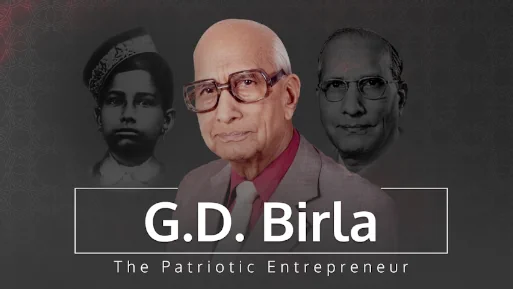We need a stable, long-term policy
28 February, 2014 | The Financial Express
ShareFebruary 2014
The Aditya Birla Group's Idea Cellular, the third largest mobile operator by revenues and subscribers, has seen its market capitalisation rise 75% over two years. It is now keen on expanding its 3G presence beyond its licences for 11 circles. In the 2G spectrum auctions, Idea won 65.2 MHz spectrum, including 5 MHz in the 900 MHz band in Delhi. It can now launch 3G services in the Delhi circle and 4G in eight key revenue markets. In an interview, the company's managing director Himanshu Kapania tells FE's Vaishnavi Bala the sector will see some stability, but many issues need to be addressed. Edited excerpts:
The Indian telecom sector is on the cusp of a change. How do you see the industry going ahead?
Renewal of licences, spectrum auction, spectrum usage charges, spectrum trading and sharing and M&;A will be the policy activities that will be closely monitored by the industry in the year ahead. Recent events demonstrate the regulator's greater understanding of the sector, and there seems to be a silver lining to the overall policy direction. This is a positive indication for the sector and holds out hope for a more stable future, especially after the roller-coaster ride of the last few years.
There are still several issues that need to be resolved. One area of concern is the contiguity of the spectrum auctioned. Even though the stated policy direction is for providing 'Broadband for All', there seems to be no commitment for offering the much needed blocks that will allow for next generation services to be launched by the auction winners. Another area of concern is the spectrum usage charge. We hope the government and regulator will work together to resolve these issues and c;reate a long-term and stable policy regime.
Over the last two years. Idea Cellular has had a good run. What would you attribute this to?
As we look back at the year gone by, we see that amidst the highs and lows of the Indian telecom sector, Idea Cellular has consistently tread an upward journey and has firmly held ground as the third largest mobile operator in India, both in terms of revenue and subscriber base. In the last two years, Idea has maintained a steady CAGR of 21% in revenue, much higher than the 12.5% of the industry. The company's revenue market share has also been steadily increasing at the rate of 23.6% during this period, and the overall growth has been well complemented by a steady increase in Ebitda.
In the year gone by, the overall mobile industry witnessed a de-growth — owing to the quashing of licences by the Supreme Court — and in a year where a mere 40 million additions were recorded nationally, it is pertinent to mention that over 40% were garnered by Idea. The key to Idea's unprecedented success has been its continued focus on the key parameters of gross revenue and RMS (revenue market share) growth, active subscribers, minutes of usage (MOU), cash profits, mobile number portability (MNP) and 3G. Idea's strong performance on each of the parameters has resulted in razor-sharp improvement in its competitive ability. Idea improved RMS from 14.3 % in Q2FY 13 to 15.8 % in Q2FY 14 — the only operator to record a growth of over 1 percentage point over the last 12 months. Idea has consistently maintained itself at the top of the VLR (visitor location register) chart with over 93% active subscribers. Ever since Idea became pan-India, it added maximum number of cell sites in 2013, further strengthening its 2G and 3G network across the length and breadth of the country.
Additionally, with a net gain of over 8.3 million as of December 31, 2013, Idea remains the operator of choice wi th the highest net gain on MNP. Our consumer-centric effort, innovative product offerings and brand outreach activities have led to a successful year for us.
What is your view of the spectrum auctions?
As you know Idea has won a total of 65.2 MHz of spectrum and has got the necessary impetus to expand the network in Delhi to 3G on 900 MHz, and launch 4G in eight of its key revenue markets, at an appropriate juncture. In eight of its leadership markets covering 64% of revenues, Idea now has the ability to launch 4G services in Kerala with 10 MHz, and in Maharashtra &Goa, Andhra Pradesh, Karnataka, Madhya Pradesh &Chhattisgarh, Punjab, Haryana, and North East, using 5 MHz of contiguous 1800 MHz spectrum won in each of these service areas, besides the right to deploy the 3G services with 5 MHz on the 900 MHz band in the strategically significant metro market of Delhi. Our total accepted bid value is approximately Rs 10,400 crore at Rs 160 crore/MHz, primarily for nine strategic service areas. This bid price will be covered
within less than two years in Ebitda terms, based on the current Ebitda trends of these nine strategic markets. After the initial payment of approximately Rs3,100 crore, the balance amount will be paid in 10 equal instalments after the two-year moratorium including interest at 10%.
ARPM (average realised rate per minute) is a major factor for telecom companies. How do you expect that to go in the coming year?
Idea has witnessed a steady improvement in ARPM, recording a year-on-year increase of over 3.8 paise per minute to 44.9 in Q3 FY14. We are hopeful of continuing this steady growth in the coming years.
With voice tariff price wars ending, the next round of price cuts seems to be taking place in data. How do you view this trend? Is it likely to change soon with the advent of 4G?
India is at the threshold of a mobile data revolution, especially with the stated policy direction set towards providing 'Broadband for All'. As a strong, pan-India network, with deep roots in the rural areas, Idea is adequately poised to drive mobile internet penetration. Idea is a leader in many circles and hence has the opportunity to further build on its deeprooted robust network, strong brand presence and large base of quality subscribers for the next phase of growth driven by data. Most of these are its 3G markets where Idea has been focused at spreading awareness about 3G and giving first-time data experience to existing 2G users to upgrade them to 3G, through special 3G experience zones and a range of affordable 3G smartphones.
We believe that the true potential of mobile internet will be unleashed only when the ecosystem comprising of network coverage, availability of affordable 3G devices and relevant content and applications is developed.






